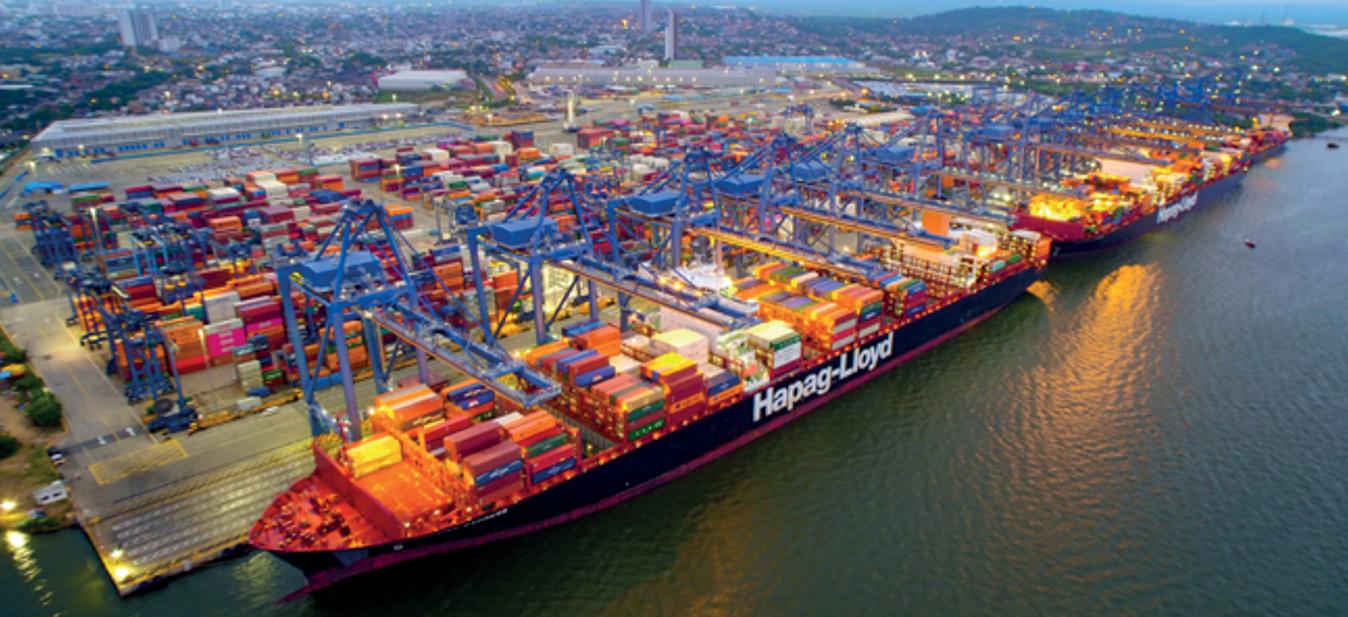
3 minute read
Se ing the Standard
CARTAGENA SETS THE STANDARD
Colombia may not have won that many medals at the recent Tokyo Olympics but its key port of Cartagena is certainly a winner in the transshipment business
Cartagena has been the second biggest for container movement in South America for more than a decade now and has actually gained traffi c since the Covid-19 pandemic struck in March of last year. This is mainly on the back of very strong transshipment cargoes, which make up around 75 to 77% of all box movements through the Colombian port.
According to Sociedad Portuaria Regional de Cartagena (SPRC), the private company that operates the two main terminals of Cartagena, the port handled 2,959,007TEU during 2020 which was a 4.4% increase over the 2,831,427TEU it registered in 2019. In terms of transshipment the increase was 6.7%, from 1.5million up to 1.6m, for full dry boxes and a massive 56.8% up for reefer boxes from 207,199TEU to 324,527TEU. Since 2015 transshipment reefer boxes have doubled through Cartagena, transshipped dry boxes have increased 50% and overall throughput has risen 33%.
This year transshipment through the north Colombian port has also got off to a solid start with 993,502TEU handled during the first six months, up 8.66% compared with the 914,318TEU during the same period of 2020.
Giovanni Benedetti, Vice Chairman, SPRC, told Port Strategy that, despite the horrors and logistical convulsions of COVID-19, 2020 and the first half of 2021 had been “very good for us in terms of cargo handled, especially transshipment” with boxes lingering in the terminal for “up to three days” and therefore bringing in hefty profits for the company, especially reefer transshipments that utilise the 3900 reefer plugs on tap; believed to be the largest number in any South American port. About 50% of the reefer volumes are green bananas, mostly from Ecuador (Guayaquil) and also dominant are avocados, pineapples and asparagus from Peru (Paita).
“Total movement for first six months has been an impressive 1.57mTEU and so we are forecasting 1.85m TEU of full containers in transshipment and 3.4mTEU for all cargoes, including empties,” states the SPRC executive, adding that Cartagena’s current capacity, of between 4.8m and 5mTEU, has also been a pull factor. “In the past we have always been betting on having the extra capacity available, so that when carriers face congestion problems elsewhere they will think `we can always go to Cartagena`. We are always ready to take on extra volumes and that’s what we’ve been doing. Even with last year’s increases we are still only at 65% capacity, but we will look to bring in more equipment over the next year or so.”
TRAFFIC MAGNET
Part of Cartagena’s success during the past year has been due to the 45 days of strike action, starting in March, which halted operations at Buenaventura, its main rival for cargoes to the capital city Bogota. This led to some domestic cargoes, around 50,000TEU, being diverted to the north Colombian port and also significant transshipment cargoes have now re-located to Cartagena, after three major West Coast South America (WCSA) services to the Mediterranean were scrapped between late 2019 and mid-2020. They have been replaced by transshipment via Cartagena and the various Panamanian box facilities.
Benedetti says Hapag Lloyd accounts for around 44% of its transshipment traffic while Maersk and CMA CGM account for 20% each, and ONE 8%.
A number of developments surrounding and following on from the COVID-19 outbreak and the re-configuring of liner services by the world’s leading carriers have seen both Panama and Cartagena pick up significant transshipment volumes from the northern Caribbean transhipment ports, such as Kingston, Jamaica and Caucedo in the Dominican Republic.
That is certainly the view of Ricardo, Sanchez, the Senior Economic Affairs Officer of the International Trade and Integration Division of ECLAC (Economic commission for Latin America and the Caribbean).
“There has been a shift from the north Caribbean [Kingston, Caucedo, Freeport, etc] to the south Caribbean, with Panama and Cartagena benefitting tremendously,” he explains to Port Strategy while attending a shipping conference in Puerto Rico. “This is part of the notorious practise of re-hubbing that we see from carriers who have so many hub ports to choose from in the Caribbean.”
8 Transshipment










